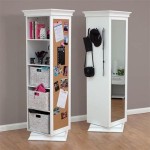How Much Does It Cost To Replace A Toyota Corolla Side Mirror?
Replacing a side mirror on a Toyota Corolla is a common automotive repair. Side mirrors are vulnerable to damage from collisions, vandalism, and even environmental factors. Understanding the costs associated with this repair can help owners budget and make informed decisions about the best approach.
Several factors influence the overall cost of a side mirror replacement on a Toyota Corolla. These factors include the year and model of the Corolla, the complexity of the mirror (e.g., manual vs. power, heated vs. non-heated, turn signal indicators), whether the repair is performed by a professional mechanic or attempted as a do-it-yourself (DIY) project, and the source of the replacement parts. Each of these contributes significantly to the final expense.
Factors Affecting the Cost of Toyota Corolla Side Mirror Replacement
Numerous elements play a role in determining the price of replacing a side mirror on a Toyota Corolla. Knowing these allows owners to anticipate expenses and choose the solution that best suits their needs and budget. We will delve into the primary contributors to these costs.
Vehicle Year and Model: The year and specific model of the Toyota Corolla significantly impact the cost. Newer models often incorporate more advanced features in their side mirrors, such as blind-spot monitoring, integrated turn signals, or auto-dimming capabilities. These features increase the complexity of the mirror assembly and, consequently, the replacement cost. Older models with simpler, manual mirrors will generally be less expensive to replace.
Mirror Features: The functionalities integrated into the side mirror dramatically affect the price. Basic manual mirrors are the least expensive, while power mirrors, heated mirrors, mirrors with integrated turn signals, and those with blind-spot monitoring features are progressively more costly. Heated mirrors, for example, require additional wiring and heating elements, increasing their price compared to a standard power mirror. Mirrors with blind-spot monitoring systems incorporate sensors that need calibration, further contributing to the expense. Furthermore, auto-dimming mirrors have specialized electrochromic glass that can be noticeably more pricey.
OEM vs. Aftermarket Parts: The choice between Original Equipment Manufacturer (OEM) parts and aftermarket parts is a crucial factor. OEM parts are manufactured by Toyota or its authorized suppliers and are designed to meet the exact specifications of the vehicle. They typically offer superior quality and a guaranteed fit but come at a higher price. Aftermarket parts, manufactured by independent companies, are often less expensive but may vary in quality, fit, and durability. While aftermarket options can save money upfront, they may not last as long as OEM parts, potentially leading to more frequent replacements in the long run. The long-term cost-effectiveness of each choice needs to be considered.
Labor Costs: If the replacement is performed by a professional mechanic, labor costs will be a significant component of the overall expense. Labor rates vary depending on the mechanic's location, experience, and the complexity of the repair. Dealerships typically charge higher labor rates than independent repair shops. The time required to replace a side mirror can range from under an hour to a few hours, depending on the mirror's complexity and whether recalibration of sensors or programming is needed. Obtaining quotes from multiple repair shops can help in comparing labor costs and finding the best value.
DIY vs. Professional Installation: Choosing between a DIY installation and professional installation is a key decision affecting costs. A DIY approach can save on labor costs, but it requires some mechanical aptitude, the right tools, and access to repair information. Incorrect installation can lead to damage to the vehicle or the mirror itself, potentially resulting in additional expenses. Professional installation ensures the mirror is correctly installed and functioning properly, but it incurs labor costs. The decision depends on the owner's skill level, comfort with auto repair, and the complexity of the mirror replacement.
Paint Matching: If the replacement side mirror needs to be painted to match the vehicle's color, this will add to the cost. Some replacement mirrors come pre-painted, while others require painting. Professional paint matching ensures a seamless appearance, but it involves additional labor and materials costs. If the mirror doesn't require painting, or if the owner is willing to accept a non-matching color, this expense can be avoided. However, a mismatched color can detract from the vehicle's aesthetic appeal.
Location: The geographic location can influence the cost of parts and labor. Areas with a higher cost of living tend to have higher labor rates, while parts may be more expensive in regions with higher transportation costs.
Estimating the Cost of Replacement Parts
The cost of the replacement side mirror itself is a substantial part of the total expense. Understanding the price ranges for different types of mirrors can help in budgeting and making informed purchasing decisions.
Manual Mirrors: Manual side mirrors are the most affordable option. Replacement costs typically range from $30 to $75 for aftermarket options and $50 to $150 for OEM parts. These mirrors are simple in design and lack electrical components, contributing to their lower cost. Installation is usually straightforward, requiring basic tools and minimal mechanical knowledge.
Power Mirrors: Power side mirrors, which can be adjusted electronically, are more expensive than manual mirrors. Aftermarket power mirrors generally cost between $50 and $150, while OEM power mirrors range from $100 to $300. The price difference reflects the additional electrical components and the need for proper wiring during installation. Power mirrors offer convenience and ease of adjustment, making them a popular upgrade from manual mirrors.
Heated Mirrors: Heated side mirrors, which melt ice and snow for improved visibility in cold weather, are more costly than standard power mirrors. Aftermarket heated mirrors typically cost between $75 and $200, while OEM heated mirrors range from $150 to $400. The additional cost is due to the heating element and the more complex wiring required for proper operation. Heated mirrors are particularly beneficial in regions with cold climates.
Mirrors with Turn Signals: Side mirrors with integrated turn signals, which enhance visibility for other drivers, are among the more expensive options. Aftermarket mirrors with turn signals generally cost between $100 and $250, while OEM mirrors range from $200 to $500. The higher price reflects the inclusion of LED lights and the associated wiring. Mirrors with turn signals contribute to improved road safety and are often standard on newer vehicle models.
Mirrors with Blind Spot Monitoring: Side mirrors equipped with blind spot monitoring systems, which alert the driver to vehicles in their blind spots, are the most expensive type of replacement mirror. Aftermarket options start around $200, while OEM options can exceed $500. These systems require additional sensors, complex wiring, and calibration after installation, contributing to the higher cost. While these mirrors can add considerable cost, they also greatly enhance safety, especially on busy highways.
Where to Purchase Parts: Replacement side mirrors can be purchased from various sources, including dealerships, auto parts stores, and online retailers. Dealerships typically offer OEM parts at a higher price, while auto parts stores and online retailers offer both OEM and aftermarket options. Online retailers often provide competitive pricing and a wide selection, but it's important to verify the seller's reputation and the part's compatibility with the vehicle. Comparing prices from different sources can help in finding the best deal.
Estimating Labor Costs for Professional Installation
If a professional mechanic performs the side mirror replacement, labor costs will be a significant part of the overall expense. Understanding how labor costs are calculated and what factors influence them can help in assessing quotes and making informed decisions.
Hourly Labor Rates: Auto repair shops typically charge an hourly labor rate, which varies depending on location, the shop's reputation, and the mechanic's experience. Dealerships generally have higher labor rates than independent repair shops. Average hourly rates range from $80 to $150, but can be higher in metropolitan areas or specialized repair facilities.
Time Required for Replacement: The time required to replace a side mirror depends on the mirror's complexity and the mechanic's experience. A simple manual mirror can be replaced in under an hour, while a mirror with integrated turn signals or blind-spot monitoring may take two hours or more. The mechanic will also need to inspect the wiring harness and ensure proper functionality after installation. More advanced systems require diagnostic checks to ensure vehicle systems are operating as intended after the replacement.
Additional Services: In some cases, additional services may be required, such as wiring repairs or sensor calibration. Wiring repairs may be necessary if the existing wiring harness is damaged or corroded. Sensor calibration is essential for mirrors with blind-spot monitoring systems to ensure accurate detection of vehicles in the blind spots. These additional services will add to the labor costs.
Obtaining Quotes: It's advisable to obtain quotes from multiple repair shops before proceeding with the side mirror replacement. Quotes should include the cost of the replacement part, the hourly labor rate, and an estimate of the time required for the repair as well as diagnostic procedures, if needed. Comparing quotes can help identify the most competitive pricing and ensure transparency in the repair process. It’s crucial to ask if the estimate includes any hidden costs of fees that could be tacked on in the end.
DIY Considerations: If considering a DIY replacement, factor in the cost of tools and potential damage to the vehicle. While a DIY approach can save on labor costs, it's important to have the necessary tools and technical skills. Incorrect installation can lead to additional expenses if professional assistance is needed for repairs. It's also worth noting that attempting a DIY repair may void any warranties on parts or labor.
Ultimately, the cost to replace a Toyota Corolla side mirror is contingent on the type of mirror being replaced, the choice between OEM and aftermarket parts, and whether the installation is done DIY or professionally. By understanding these factors, owners can make informed decisions and minimize repair expenses.

How Much Does It Cost To Replace A Side View Mirror In 2024 Revemoto

Broken Side Mirror What Are The Repair Options And Cost

Things To Pay Attention When Replacing Toyota Corolla S Side Mirrors Blue Koala

Toyota Side Mirror S In Kenya Move It

Broken Side Mirror What Are The Repair Options And Cost
How Much Does It Cost To Replace A Passenger Side Mirror Quora

Corolla Altis Side Mirror Auto Fold 7 Wire Autoretails

Right Passenger Side Power Foldable Replacement Mirror For 09 13 Toyota Corolla 10 11 12 Com

Replace A Broken Side View Mirror Diy Family Handyman
Wing Mirror Glass For Toyota Corolla Left And Right Buy On Autodoc Catalogue








